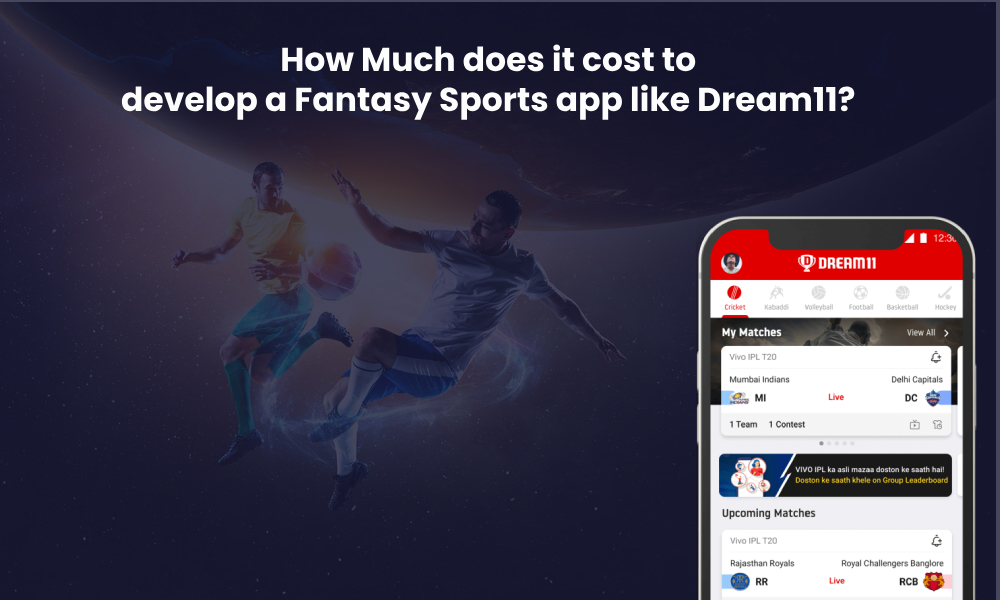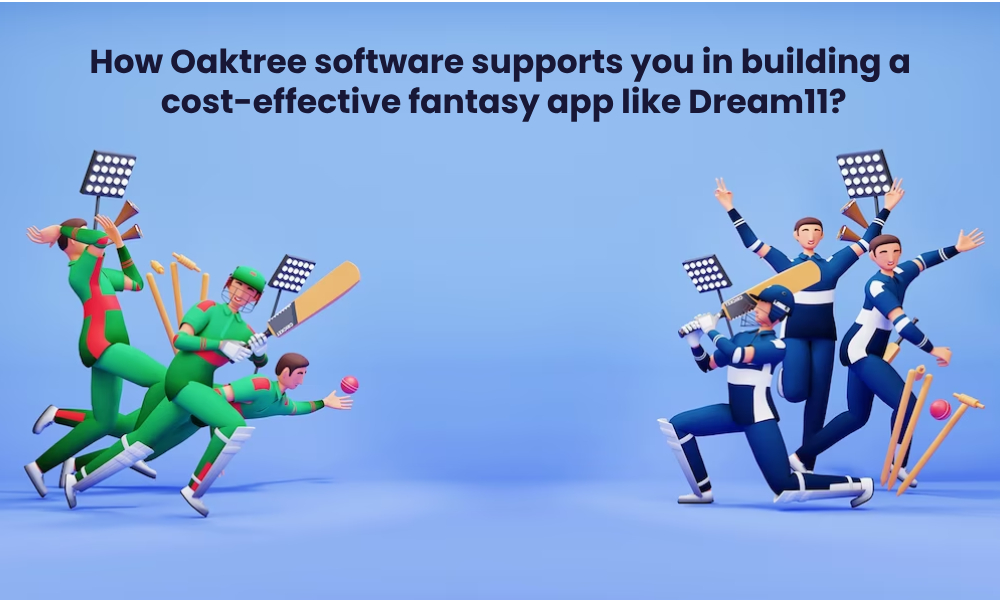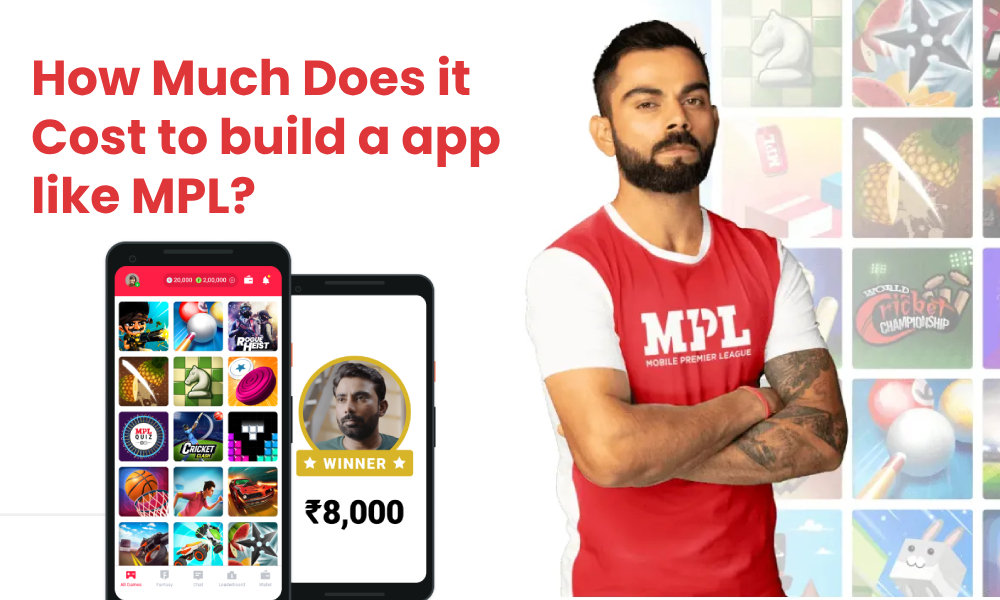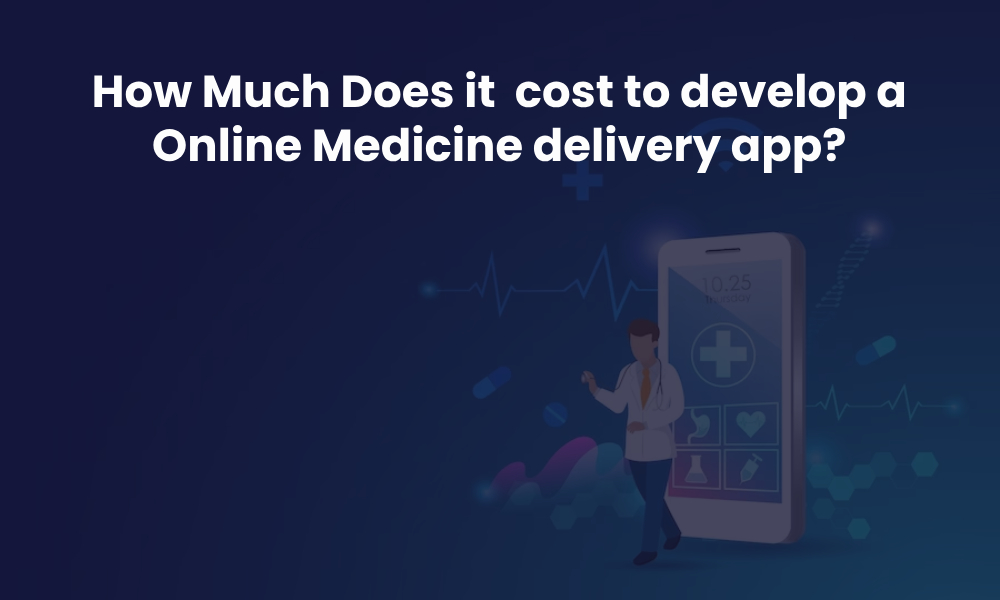
Hey there, sports fanatics and app enthusiasts! Ever imagined building your own fantasy sports app like Dream11, where you can craft your dream team and compete with others? It’s like having a virtual playground for sports lovers, right in your pocket. But hold on a second – have you ever wondered how much it costs to make a Dream 11 like that? Well, wonder no more, because we’re about to break it down for you in the simplest way possible!
In this blog, we’re taking a sneak peek behind the scenes of creating an app like Dream11. We’ll talk about all the important stuff that goes into it, and how each piece adds up to the final bill. Whether you’re someone with big app dreams, a curious explorer, or just someone who loves sports, we’re here to spill the beans on the costs that bring your fantasy app like Dream11 to life.
So, if you’re ready to discover the secrets behind the curtain and find out what it takes to make a fantasy sports app that wows users, keep reading. We’re about to unlock the mystery of fantasy apps like Dream 11 development costs and show you how much you might need to invest to make your sports-loving dreams come true!
Benefits of Building a Fantasy App like Dream11
Revenue Generation: Fantasy sports apps offer multiple revenue streams, such as entry fees for contests, in-app purchases for virtual goods or premium features, advertising partnerships, and sponsorships. These avenues can lead to significant revenue generation.
High User Engagement: The nature of fantasy sports games keeps users engaged over extended periods. They return regularly to manage their teams, make predictions, and participate in contests, boosting overall app engagement and increasing the potential for in-app purchases.
Monetization of User Data: While ensuring privacy and adhering to data protection regulations, app owners can gather valuable user data, including preferences, playing habits, and interactions. This data can be anonymized and used to offer targeted promotions, improving user experiences and boosting revenue.
Brand Building: A successful fantasy sports app can enhance the brand’s reputation, especially if it’s associated with popular sports leagues or events. This can lead to greater brand visibility and credibility in the industry.
Partnerships and Collaborations: As your fantasy app gains traction, you’ll have the opportunity to collaborate with sports leagues, teams, sponsors, and advertisers. These partnerships can provide additional revenue streams, exposure, and mutual benefits.
User Base Expansion: If you create a compelling and unique fantasy app, you can attract a diverse user base spanning different demographics and geographies. This expansion increases the app’s market reach and potential revenue sources.
Data Insights for Strategic Decision-making: The data collected from user interactions and preferences can provide valuable insights. This information can guide strategic decisions, including updates to features, improvements to user experiences, and targeted marketing efforts.
Features to include in Fantasy app development like Dream11
Creating a fantasy app like Dream11 involves integrating a range of features that provide users with an immersive and engaging experience. Here are some key features to consider when building your fantasy sports app.
User Registration and Profiles:
- The user-friendly registration process with social media integration.
- User profiles display basic information, achievements, and activity history.
Player Selection:
- Interactive player selection interface with filters for different sports, teams, and player positions.
- Real-time player statistics, historical performance data, and injury updates to aid user decision-making.
Contest Creation:
- The ability for users to create their own contests or join existing ones.
- Customizable entry fees, contest types (head-to-head, leagues, tournaments), and prize structures.
Real-time Scoring:
- Integration of real-time sports data feeds for live scoring.
- Instant updates on user’s team performance during live games.
Leaderboards and Rankings:
- Dynamic leaderboards showcasing user rankings in different contests.
- Filters to view rankings based on different criteria (e.g., contest type, entry fee).
Payments and Transactions:
- Secure payment gateways to facilitate entry fee payments and withdrawals.
- Management of virtual wallets for users to track their account balance.
Push Notifications:
- Customizable notifications for contest updates, live match scores, and upcoming contests.
- Reminders for user teams’ deadlines and contest start times.
Social Sharing and Invitations:
- Options to share achievements, team selections, and contest wins on social media.
- Referral programs incentivize users to invite friends to the app.
Chat and Community Interaction:
- In-app chat or discussion boards for users to interact, share strategies, and discuss matches.
- Private leagues for users to create groups and compete against friends.
Admin Dashboard:
- Backend dashboard for app administrators to manage users, contests, payments, and content.
- Ability to set up and customize contests, prize distribution, and rules.
Statistics and Insight
- Detailed player and team statistics for users to analyze and strategize.
- Historical data and trends to help users make informed decisions.
Gamification and Rewards:
- Loyalty programs and rewards for consistent participation.
- Achievement badges and virtual trophies for milestones and accomplishments.
Security and Privacy:
- Robust security measures to protect user data and financial transactions.
- Compliance with data protection regulations.
Multi-platform Compatibility:
- Compatibility across different devices and platforms (iOS, Android, web).
Personalization:
- Customizable app themes, avatars, and team names.
- User preferences for receiving notifications and content.
Tutorial and Help Section:
- Onboarding tutorial for new users to understand how the app works.
- Comprehensive help section addressing common queries.
Integration with Social Media and Live Streaming:
- Integration with social media platforms for easy sharing and engagement.
- Links to live streaming of matches to enhance the real-time experience.
Case Study – A Remarkable platform delivering in-depth soccer details
How to Build a Dream11 app like the Fantasy app?
Ideation and Research:
Understand the concept of fantasy sports and research successful apps in the market. Analyze the user experience, features, and engagement strategies that contribute to their popularity. Identify your target audience, preferred sports, and the unique selling points you want to incorporate into your app.
Conceptualization and Planning:
Gather your ideas and create a detailed plan for your app. Define the core features you want to include, such as player selection, content creation, live scoring, and social interaction. Outline the app’s user flow, considering the journey users will take from registration to participating in contests.
Technology Stack Selection:
Choose the right technology stack for your app’s development. Decide on the programming languages, frameworks, and tools for both the front (mobile app and web) and backend development. Select a database system that can handle large amounts of user and sports data efficiently.
User Interface and Design:
Design a user-friendly interface that offers an intuitive and visually appealing experience. Create wireframes and mockups to map out the app’s layout and design elements. Focus on ensuring a seamless user journey, clear navigation, and easy access to key features.
Backend Development:
Set up the backend infrastructure that will manage user data, contests, payments, and interactions. Implement user authentication and authorization mechanisms to ensure secure access to the app. Develop APIs to connect the frontend and backend components.
Real-time Data Integration:
Integrate real-time sports data feeds into the app to provide users with live match scores, player statistics, and updates. Work with reliable data providers to ensure accurate and up-to-date information is displayed within the app.
Contest Creation and Management:
Create a system that allows users to create their own contests, set entry fees, and define rules. Implement algorithms to ensure fair and balanced team selection. Develop mechanisms to manage contest results, prize distribution, and rankings.
Live-Scoring and Notifications:
Set up the app to receive real-time match scores and player performance data. Implement push notifications to keep users informed about contest progress, live scores, and important updates related to their selected players and teams.
Payment Integration:
Integrate secure payment gateways to facilitate entry fees, deposits, and withdrawals. Develop a virtual wallet system that users can use to manage their funds within the app. Ensure that payment transactions are smooth and secure.
User Profiles and Social Features:
Create user profiles where users can view their contest history, achievements, and statistics. Incorporate social features such as friend invitations, chat functionality, and the ability to join private leagues. Encourage user interaction and engagement within the app.
Testing and Quality Assurance:
Thoroughly test the app to identify and fix any bugs, glitches, or issues. Conduct functional testing to ensure that all features work as intended. Perform usability testing to assess the user experience and gather feedback for improvements.
Launch and Marketing:
Publish the app on relevant app stores (iOS, Android) and make it accessible via the web. Develop a marketing strategy to promote the app, including social media campaigns, influencer partnerships, and collaborations with sports-related entities. Generate excitement and anticipation among potential users.
User Feedback and Updates:
Encourage users to provide feedback on their experiences with the app. Use this feedback to identify areas for improvement and future feature enhancements. Regularly update the app to introduce new features, fix bugs, and enhance the user experience.
Legal and Compliance:
Ensure that your app complies with data protection regulations and legal requirements in the regions where it will be accessible. Clearly communicate terms of use, privacy policies, and any disclaimers to users. Prioritize user privacy and data security.
Scaling and Maintenance:
Monitor the app’s performance, server load, and user engagement as your user base grows. Scale your infrastructure to accommodate increasing demand. Provide ongoing maintenance to ensure the app’s reliability and responsiveness.
The cost of developing a fantasy sports app like Dream11 can vary significantly based on various factors. Here are the key factors that influence the app development cost:
Scope and Complexity: The complexity of your app’s features, user interactions, and overall scope plays a major role in determining the development cost. More features, integrations, and functionalities will generally lead to a higher cost.
Platform (iOS, Android, Web): Developing for different platforms (iOS, Android, and Web) involves separate development and testing efforts. The cost can vary depending on whether you choose to develop for one platform or multiple platforms simultaneously.
Design and User Experience: Designing an intuitive, user-friendly interface requires time and expertise. A well-designed app enhances user engagement and satisfaction but can add to development costs.
Technology Stack: The choice of programming languages, frameworks, and tools impacts both the development speed and complexity. Some technologies might have higher associated costs due to licensing fees or specialized expertise.
Backend Development: Implementing the backend infrastructure, including user accounts, data storage, real-time data integration, and payment gateways, affects development complexity and cost.
Real-time Data Integration: Integrating real-time sports data feeds for live scores, player statistics, and updates adds complexity to the app and might require third-party data provider agreements.
Contest and Scoring Algorithms: Developing the logic for contest creation, player selection, and scoring algorithms can be intricate and time-consuming, contributing to development costs.
Payment Integration: Integrating secure payment gateways and wallet systems for transactions adds complexity and might involve third-party payment processors, which can affect costs.
Multi-device Compatibility: Ensuring the app works seamlessly across various devices, screen sizes, and orientations increases development efforts and costs.
Location of Development Team: The geographical location of your development team influences development costs. Rates can vary significantly based on whether you hire local developers or outsource to other regions.
| Technology | United States ($) | United Kingdom (£) | India ($) | UAE (AED) |
|---|---|---|---|---|
| Salesforce | $100 - $200+ | £60 - £120 | $20 - $40 | AED 150 - AED 300+ |
| MERN/MEAN | $80 - $150+ | £50 - £100 | $15 - $40 | AED 100 - AED 250+ |
| Java | $80 - $150+ | £50 - £100 | $15 - $40 | AED 100 - AED 250+ |
| .NET | $80 - $150+ | £50 - £100 | $15 - $40 | AED 100 - AED 250+ |
| Ruby on Rails | $80 - $150+ | £50 - £100 | $15 - $40 | AED 100 - AED 250+ |
| ReactJS | $70 - $140+ | £40 - £90 | $12 - $35 | AED 90 - AED 200+ |
| Vue.js | $70 - $140+ | £40 - £90 | $12 - $35 | AED 90 - AED 200+ |
Testing and Quality Assurance: Rigorous testing, including functionality, performance, and security testing, is essential for a reliable app. Robust testing practices contribute to development costs.
Legal and Compliance Requirements: Complying with data protection regulations, securing user data, and ensuring legal aspects are in order can involve legal consultations and compliance measures that add to costs.
Maintenance and Updates: After the initial launch, ongoing maintenance, bug fixes, updates, and feature enhancements will contribute to the long-term cost of the app.
Marketing and Launch: Promoting the app, creating marketing campaigns, and ensuring a successful launch require additional resources and can influence the overall cost.
Project Management: Effective project management to coordinate development tasks, track progress, and ensure timely delivery can incur costs.
It’s important to note that while these factors influence the cost, they also contribute to the overall quality and success of your app. Carefully evaluating each factor, setting clear priorities, and aligning your budget with your app’s goals will help you make informed decisions during the development process.
However, to provide a rough estimate, developing a high-quality fantasy sports app like Dream11 with essential features for a single platform (either iOS or Android) can start at around $50,000 to $100,000. This estimate covers the core functionalities, user registration, player selection, contests, live scoring, and basic user interface design.
If you want to develop the app for both iOS and Android platforms, the cost could increase by an additional 50% to 100% due to the separate development efforts for each platform.
Keep in mind that these are just rough estimates, and the actual cost can be higher depending on the complexity of the app, additional features you want to include, design intricacies, the experience of the development team, and other factors.
If you plan to integrate more advanced features such as real-time data feeds, social interactions, payment gateways, and sophisticated scoring algorithms, the cost will increase accordingly.
To get a more accurate cost estimate for your specific project, it’s recommended to consult with an expert fantasy app development company like Oaktree Software which can provide a detailed breakdown based on your requirements and objectives.
How Oaktree software supports you in building a cost-effective fantasy app like Dream11?
When aiming to develop a cost-effective yet high-quality fantasy app similar to Dream11, partnering with a proficient technology consulting and development company like Oaktree software can be a strategic choice. They specialize in guiding businesses through the process of creating digital solutions that align with both budget constraints and the desire for top-notch quality. By collaborating with Oaktree software, you can leverage their expertise in requirement analysis, efficient development methodologies, and innovative approaches to ensure your fantasy app achieves the right balance between cost-effectiveness and delivering a rich user experience.
Strategic Requirement Analysis: They conduct in-depth requirement analysis to understand your vision and goals, ensuring that the essential features are prioritized for cost-effective development.
MVP Approach: They advocate for an MVP (Minimum Viable Product) strategy, helping you focus on core features and launch quickly to gather user feedback and reduce initial investment.
Feature Prioritization: They assist in ranking features by importance and impact, allowing you to allocate resources to the most valuable aspects of your app.
Efficient Development Practices: Leveraging agile and lean development methodologies, Oaktree software minimizes waste and streamlines the development process, optimizing both time and cost.
Open Source Integration: They incorporate open source technologies and frameworks where applicable, tapping into cost-effective solutions without compromising quality.
Cross-Platform Development: By utilizing cross-platform frameworks, such as React Native or Flutter, their Fantasy app developers team ensures simultaneous development for multiple platforms, saving development time and resources.
Continuous Iteration: They emphasize iterative development, enabling you to release updates in smaller increments, gather user feedback, and make improvements gradually.
Quality Assurance Through Testing: Oaktree software implements automated testing to identify and rectify issues early on, reducing the cost of addressing problems in later stages.
Scalable Architecture: With an eye on future growth, we design a scalable app architecture that accommodates expansion without requiring costly reengineering.
User-Centric Design: We prioritize user experience through intuitive design and interface, minimizing user confusion and potential support requests.
Conclusion
In the ever-evolving landscape of digital innovation, crafting a fantasy app reminiscent of Dream11 is an exciting endeavor that demands a delicate balance between engagement and simplicity. Collaborating with a visionary partner like Oaktree software empowers you to navigate this journey, where cost-effective development meets the art of delivering an immersive user experience. By synergizing smart strategies, efficient development practices, and an unwavering commitment to user-centric design, you can transform your fantasy app aspirations into a reality that captivates users while remaining gentle on your budget. The realm of dream-like fantasy awaits – embark on this adventure with Oaktree software by your side and witness your vision come to life in the most engaging and elegant way possible.
FAQ’s
How much does it cost to develop a fantasy sports app like Dream11?
The cost of developing a fantasy sports app like Dream11 can vary widely based on factors such as features, platforms (iOS, Android), design complexity, development team location, and more. A ballpark estimate could range from tens of thousands to hundreds of thousands of dollars.
What are the key cost drivers in fantasy app development?
The main cost drivers include app features (real-time updates, player statistics, payment integration), app complexity, user interface design, development hours, third-party API integrations, and ongoing maintenance.
How can I keep the development costs in check without compromising quality
Prioritize features, start with an MVP, adopt efficient development methodologies, use open-source technologies, consider cross-platform development, and collaborate with experienced development partners.
How long does it take to develop a fantasy app like Dream11?
Development timelines depend on the app’s complexity and features. A simple app could take a few months, while a more feature-rich one might take six months or more.
Can I launch a basic version first and then add more features later?
Absolutely, launching an MVP (Minimum Viable Product) with essential features is a common strategy. You can gather user feedback, refine the app, and gradually add more features in subsequent updates.








